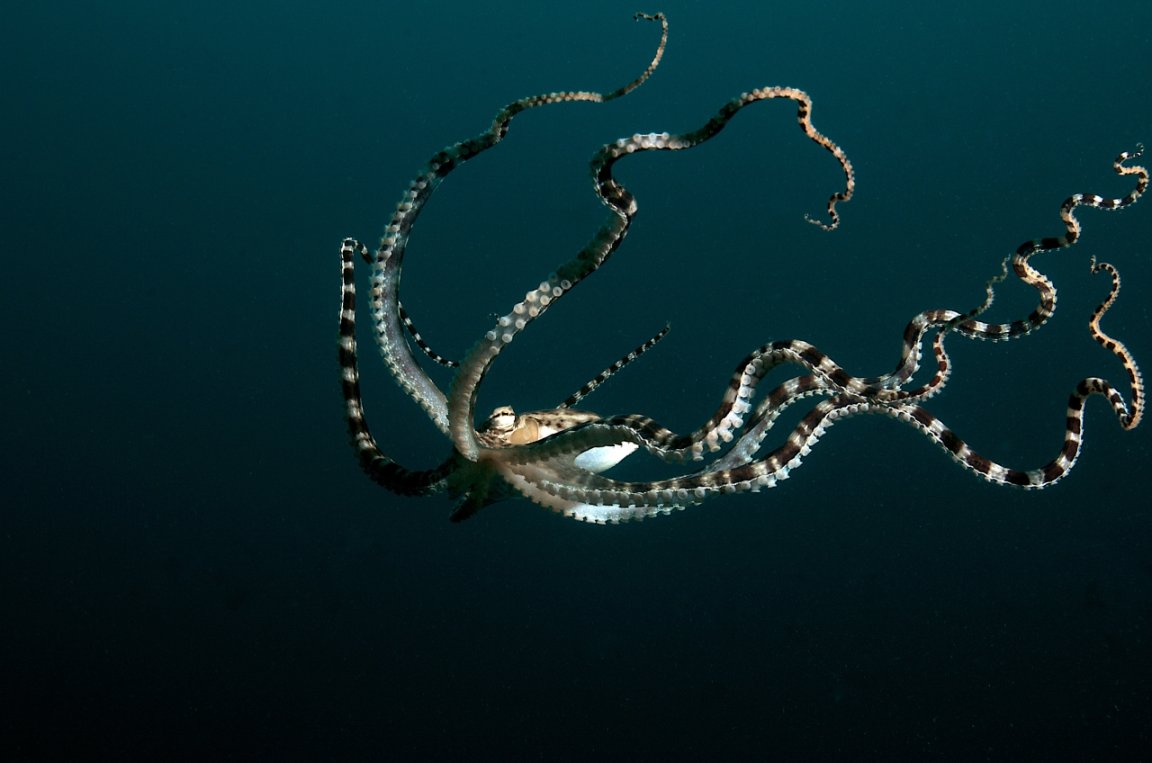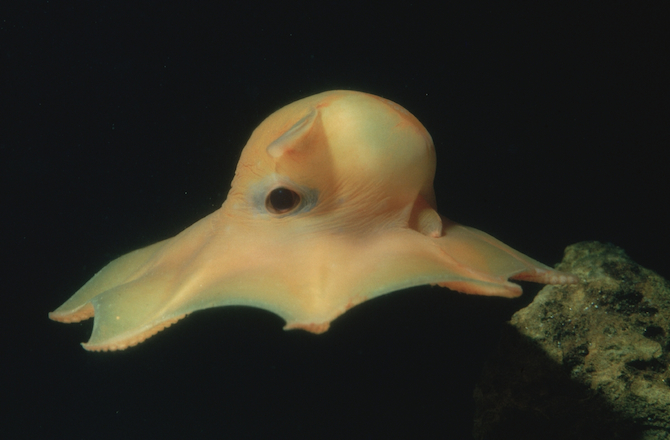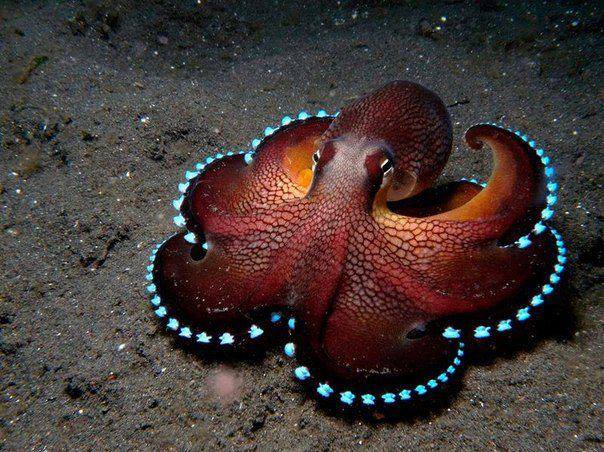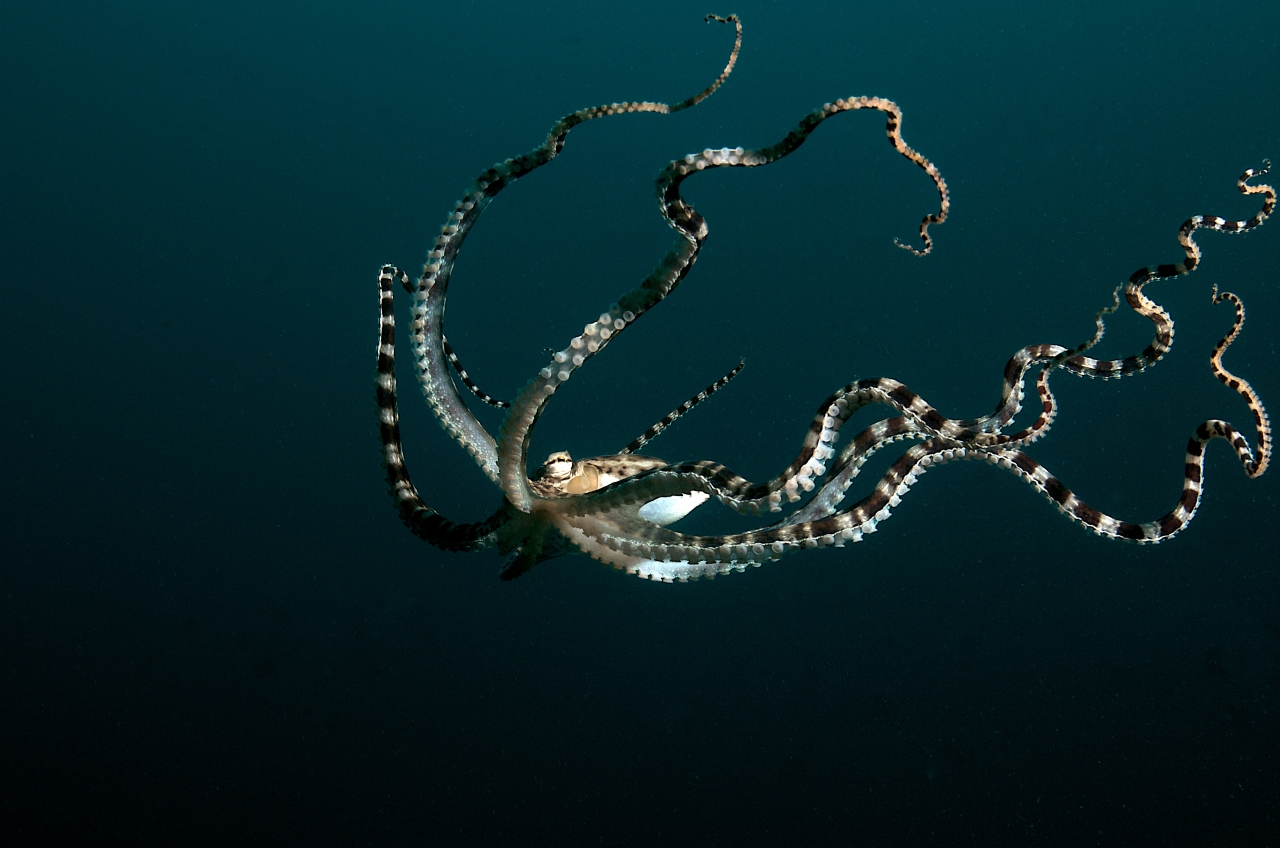
The Tentacled Flapjack Octopus:

At first glance, this octopus may seem like just your average underwater creature, but once you see them in action, you quickly realize that they are anything but ordinary. These little guys employ an incredible camouflage technique, which involves turning themselves inside out (sort of). Their dome-like heads can transform so that they are nearly flat, like a saucer, and their tentacles can stretch up above the dome (which makes it seem like they are the wrong way out).
Scientists assert that the octopus uses this tactic because it makes it less conspicuous to predators and prey. In the video, you can clearly see that the octopus looks nothing like its former self. When flattened like this and resting on the ocean floor, the creatures are rather hard to detect.
Additionally, you may recognize the tentacled flapjack, as Pearl in “Finding Nemo.” The character was modeled after these creatures, so they are really rather famous.

The Coconut Octopus:

This creature has a simply astounding defense system. If it is caught unawares by a predator, the octopus rolls itself into a small ball. This is done in order to help the creature look like a coconut and, thereby, avoid detection by organisms that want to have it for breakfast (now you understand where it gets its name from).
But most octopus are rather flexible, so that’s the coolest thing about these creatures. In March 2005, researchers at the University of California at Berkeley announced that these organisms are capable of bipedal behavior. That’s right, they walk and even run! Of course, they don’t frolic across land, but the bottom of the ocean floor. The octopus uses two of its tentacles like feet in order to propel itself across the ocean floor.
These octopi also mimic the way coconuts float and bob in water, and can successfully use this method to maneuver away from predators.

The Mimic Octopus:

This creature is also known as Thaumoctopus Mimics, but it totally should’ve been called the Transformer Octopus, as this animal can shape-shift into a myriad of sea creatures on command.
When the creature was discovered a mere 20 years ago off the coast of Sulawsi, Indonesia, biologists were unsure of what it was and how it worked. It was seen literally morphing into sea snakes, like the infamous black and yellow banded sea-snake,the damselfish, lion-fish, flatfish, jellyfish, crab, the mantis shrimp, and several other animals native to its area (literally going so far as to change its color, shape and texture).
In one case, the mimic was spotted positioning itself into a clump of algae, before swimming away—baffling observers.
